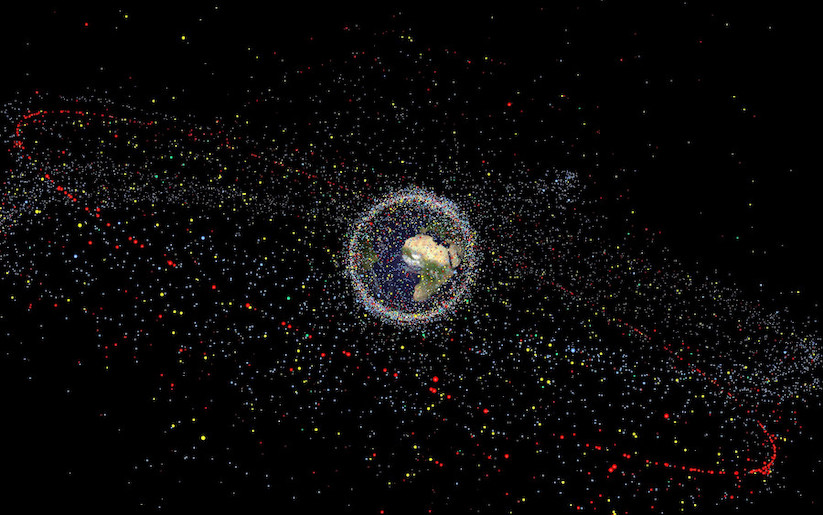Space is a mess. That according to the European Space Agency (ESA), which estimates there are 36,500 pieces of space debris orbiting the earth of greater than 10cm in size, and one million pieces between 1cm and 10cm. The number of smaller yet still dangerous objects is too staggering to contemplate.
Valerio Carandente, Galileo Service Delivery Manager at Spaceopal, the Galileo service operator, told a group assembled near its headquarters in Munich, “There are a number of space debris policies and regulations in place. ESA has its European Code of conduct for Space Debris Mitigation, and there are the IADC [Inter-Agency Space Debris Coordination Committee] Space Debris Mitigation Guidelines, and similar requirements from UNOOSA [United Nations Office for Outer Space Affairs] and ISO [International Organization for Standardization]. Unfortunately, up to now, none of these policies and regulations are legally binding.”
Carandente cited the 2021 incident in which a Galileo satellite had to be saved from smashing into a wayward Ariane upper stage. “That object came from an Ariane 4 rocket that was launched in 1989, and it’s been in orbit ever since.” The errant piece occupies a highly elliptic orbit, making it difficult to track, especially at its apogee. “This kind or orbit crosses the MEO [medium Earth orbit] range,” said Carandente, “creating the possibility of collisions with MEO satellites, including Galileo satellites.”
In that fateful month of March 2021, the European Space Surveillance and tracking (EU SST) service noticed an elevated risk of collision between Galileo satellite 219 (GSAT0219) and the delinquent Ariane 4 upper stage. EU SST comprises a network of ground- and space-based sensors, with processing capabilities for data and information provision. Among its resources are the Completely Autonomous Service Telescopes (COASTs) at the Astrophysics Institute of the Canary Islands.
Out of the way!
Spaceopal provides information to EU SST about the orbits of Galileo satellites. EU SST uses that to assess the risk of collision with pieces of space debris, whose positions it also constantly monitors. When a risk of collision is identified, a warning is issued to the operator. If that risk continues to rise, the warning becomes an alert, and the operator is advised to plot a collision avoidance maneuver. Spaceopal performed such a maneuver, saving GSAT0219 from possible disaster.
“What we know is that space debris represents a risk that is slowly but surely increasing for objects in MEO orbit,” said Carandente. “Through effective cooperation between the European Commission, EUSPA [the European Agency for the Space Program] and EU SST, we were able to avoid a potentially catastrophic event that could have seriously compromised the Galileo program.
“We are committed to respecting the policies and recommendations that we have already mentioned,” Carandente said. “When graveyarding Galileo assets that are reaching end of life, our practice will be to leave them in orbits which are at least 300km above the operational orbits, insuring a stability to be maintained for at least 100 years thereafter. Needless to say, in order to mitigate the space debris risk in the future, to make this environment much safer, given the increasing number of objects which are being launched into space in the coming years, a legally binding space debris regulation should be enforced worldwide.”





